The Royal Wedding of Prince William and Catherine Middleton was just a week ago and the details of Catherine’s wedding gown were probably the best kept secrets of the entire event. The secrecy surrounding that information could rival that of any of classified military operation.
Catherine’s gown was indeed elegant and timelessly beautiful. As soon as she stepped out of her royal limousine numerous wedding gown designers began cutting and sewing knockoff gowns. In New York at least one knockoff gown was finished just a few hours after the ceremony. Knockoff gowns should be available in a couple months and will undoubtedly be very popular this year.
Watching highlights of the royal wedding made me wonder about wedding dresses of the past. What was the fashionably well-dressed bride wearing over a century ago? What types of wedding attire did my ancestors wear? I pulled out some old photos, looking for wedding pictures.
Unfortunately, I have very few wedding photos of my ancestors. I do not have one wedding photo of either of my grandparents. I don’t know if they had photos taken on their wedding day or if the photos did not survive. I do have one wedding photo of my maternal great grandparents, John Scaer and Elizabeth Schinnerer, married 15 April 1894 in Van Wert County. (Vol. 8:287) Although the church records say they were married at Zion Lutheran Church, Schumm, couples back then were often wed during an informal ceremony at the home of the bride. Their photo shows them sharing a nice friendly handshake. It looks like they were sealing a business agreement instead of committing their lives to each other. “A handshake instead of a kiss.” I remember that line from an old TV commercial. (photo: Longsworth & Agler, Van Wert).
Most of the wedding dresses that my ancestors wore were probably home made. In the 1800s my Mercer, Van Wert and Jay County kin didn’t have the luxury of shopping at the nearest David’s Bridal or commissioning a designer to make their special dress. The bride, a family member, or a good seamstress often made the dress. Or, she may have worn the best dress that she had at that time. Her wedding dress could later be altered and worn again for other events. Sleeves could be shortened and necklines changed. I’m sure my ancestors were very practical in that respect.
During the second half of the 19th century wedding dresses were not necessarily white or ivory. They were often made with colored fabric, even floral and striped fabric. Brides chose just about any color, although green was considered unlucky. White was a symbol of purity and virginity and was thought to ward off evil spirits. Wedding dresses were often brown or gray or even black. Such dresses could not only be used as a best dress but could also be a traveling dress. After all, a colored dress would not show dust, dirt and stains as much as a white dress. Again, practicality and cost won out. Materials ranged from printed cotton to lightweight wools combined with silk.
The bridal veil was an important accessory years ago. It was often the fanciest part of the bride’s ensemble. Even if the bride had to make her own dress she might be able to afford a white wedding bonnet that she could keep as a special memento. Veils consisting of artificial white orange blossoms were also popular in the late 1800s.
Some of these photos are of unidentified relatives on their wedding day. These photos were in an old album that contained both Schinnerer and Scare photos, but mainly Schinnerer photos. If anyone can identify these Schinnerers or Scaers, please contact me. Some of them were Friedrich Schinnerer’s children. I tried to compare facial features to identify them, but please let me know of any corrections.
Many hats were worn at the Royal Wedding last week. I’m not sure if hats have made a comeback or if they were worn because the Queen always dons a hat. A few of those hats were quite unique last week and I wondered how some women kept them attached to their foreheads. Below is a nice photo of some classy hats from the Schinnerer/Scaer album.
Below is an old poem about the color of a bride’s wedding dress and the luck it might bring:
Married in white, you will have chosen all right.
Married in gray, you will go far away.
Married in black, you will wish yourself back.
Married in red, you’ll wish yourself dead.
Married in blue, you will always be true.
Married in pearl, you’ll live in a whirl.
Married in green, ashamed to be seen.
Married in yellow, ashamed of the fellow.
Married in brown, you’ll live out of town.
Married in pink, your spirits will sink.

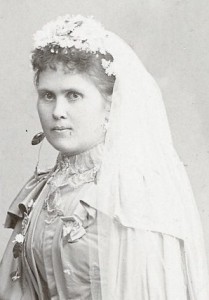
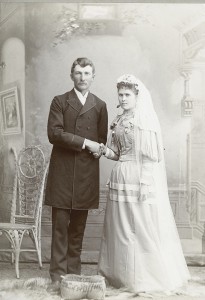
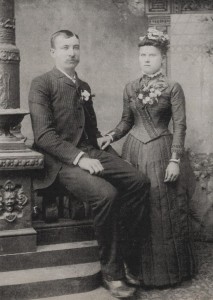
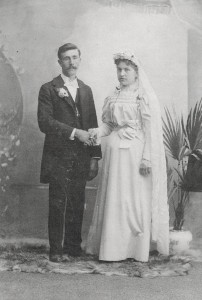
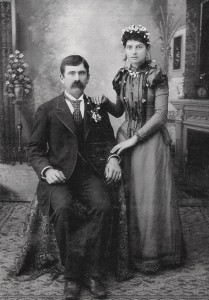
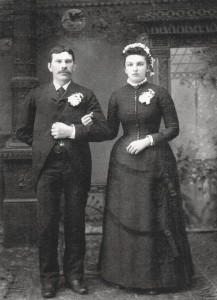

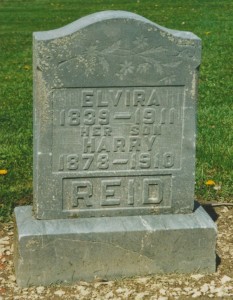

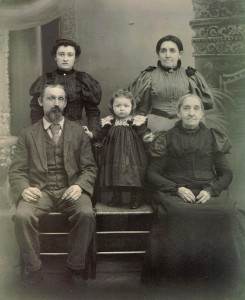
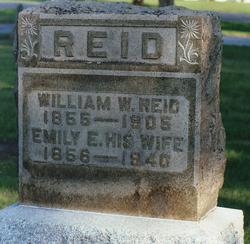
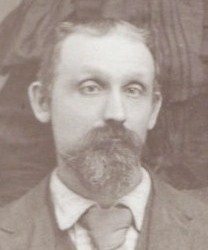
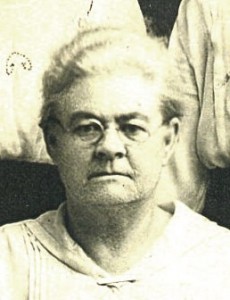


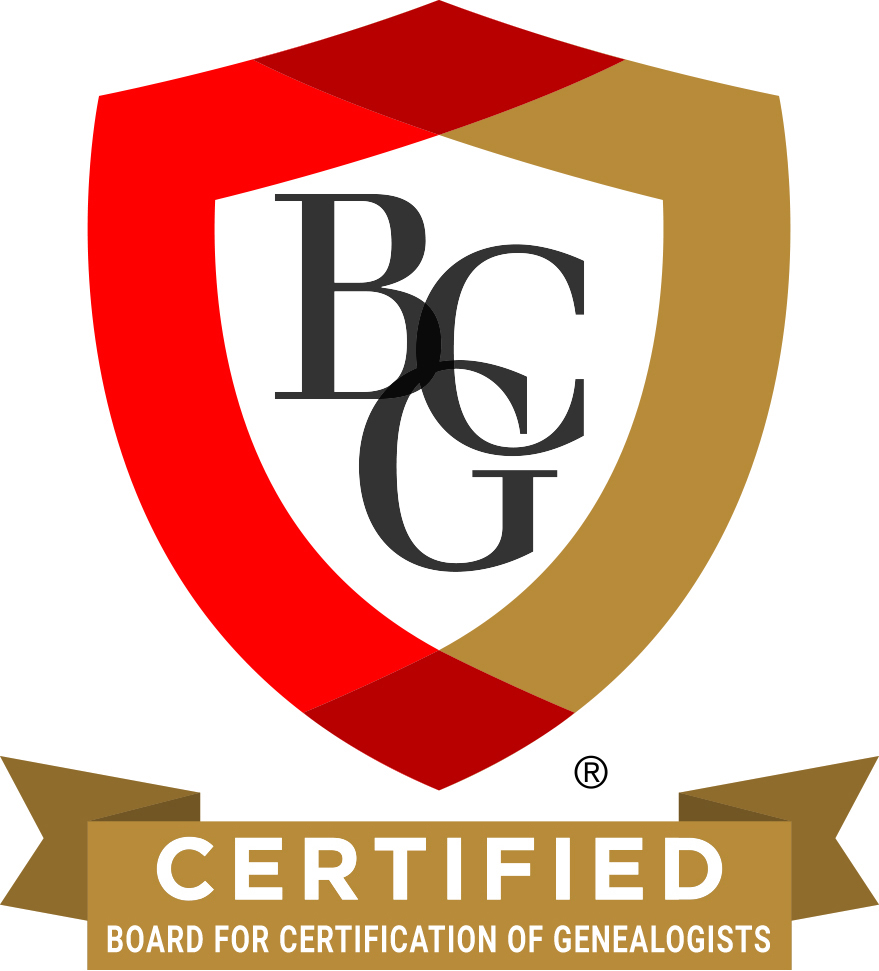
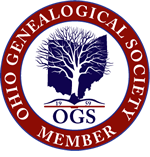

I don't have any information about that event, but what names are you looking for? There may be an account…
As far as I know Gertrude was his only child.
Did Johannes have any children besides Gertrude?
I got a photo of van wert men mustered to leave for ww1 aug 5 1917. Wondering if you have…
Unusual names for sure. I wish I knew why he picked those names. Liking geography is a good possibility. Thanks…